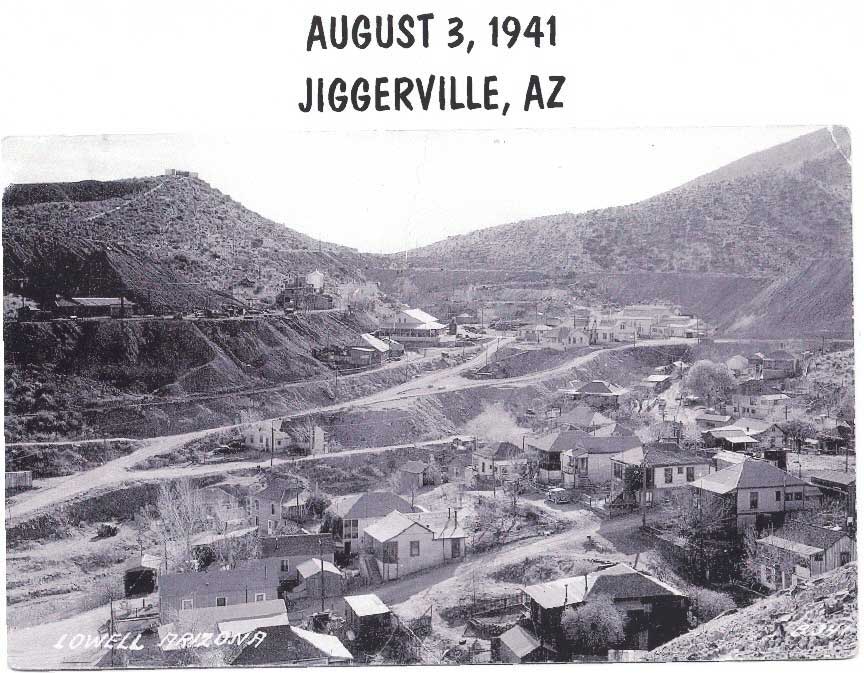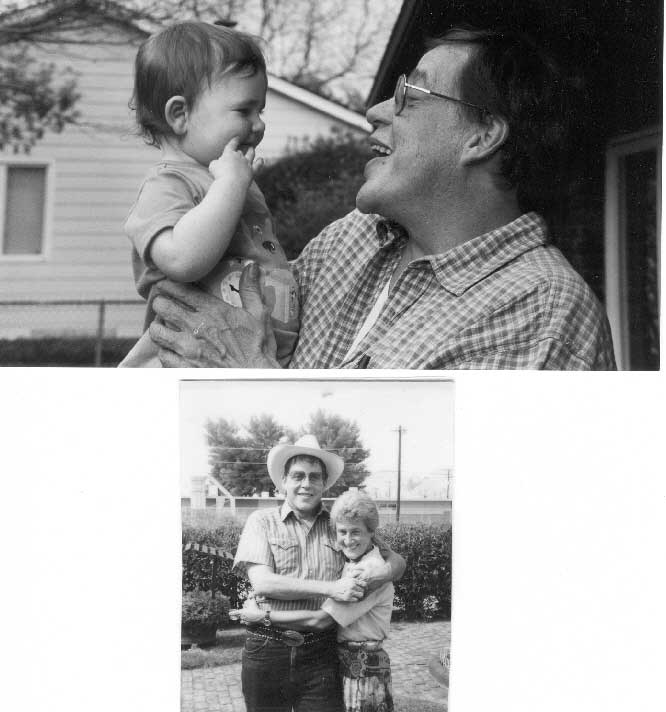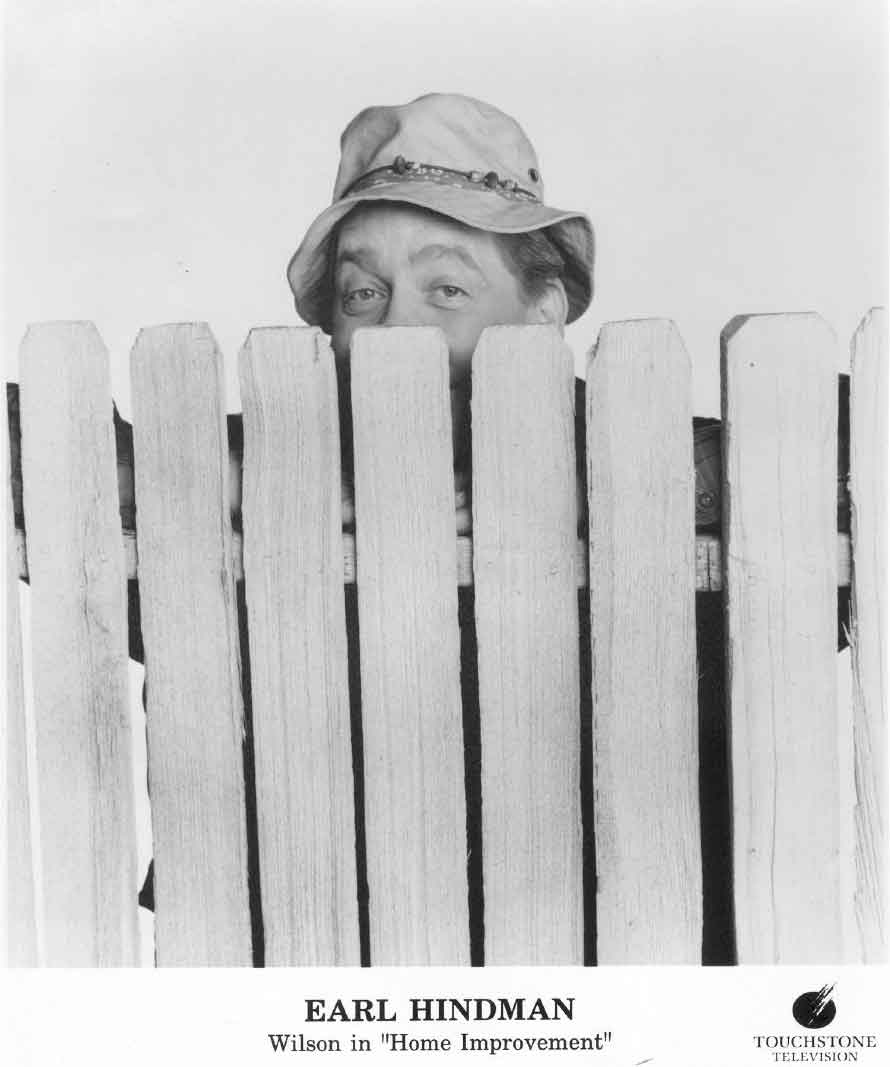


Dean Shields, Earl's Sister


October 20, 1945 -- December 30, 2003
 |
October 20, 1942, Earl's journey began in the Copper
Queen Hospital in the mining town of Bisbee, Arizona. We lived in a small settlement on
the outskirts of Bisbee, The settlement was started to provide housing for the
"Jigger Bosses"of the Calumet and Arizona Company, the only serious rival to the
Copper Queen Consolidated, and was named "Jiggerville."
|
|
 |
Jiggerville was our "Magic Kingdom", and all
of our houses were at different levels because of the terrain. We weren't jammed into the
canyons like Bisbee was, but we had some really steep roads, a gulch running through it,
and a place we called "The Dump", which was above Jiggerville, and you could go
up on the dump and get a birds eye view of our houses. I was 4 years old when Earl
was born, my brother Ray was 8. Earl started walking and talking at a very early age, so
us older kids had this really cute little kid to play with. As Earl got older, my brother
Ray and his buddies teased Earl unmercifully. But there was something so special about
Earl, he liked all the attention, and he never got angry or upset, except the time Ray
strung a rope across Earl's favorite bike path. He went racing along and never noticed the
rope. It caught him and flipped him off the bike. Earl cried, and so did Ray, because Mom
spanked Ray's butt.
|
|
 |
||
| Our childhood in the magic kingdom was filled with
games of hide & seek, making rubber band guns with pieces of wood, a clothespin, and
shooting each other with rubber bands. We made telephones with 2 tin cans and a string,
pulling the string tight and then yelling into the can. Neighbors hundreds of yards away
could hear us better than we could hear each other. Our older brother Ray made
"crystal radios." that actually worked, but I have no idea how. We built
coasters so we could coast down the steep hills. We would put our ear on the railroad
tracks to see if a train was coming, so we could flatten a penny by placing it on the
track. We would go up on "the dump", build big bon-fires and throw potatoes in
to bake. We explored old mine shafts. We walked around Sacramento Pit to go to the Lyric
Theater in Bisbee. Earl was fascinated by the movies, and he loved comic books, Superman
especially, and he pronounced muscles "Muskleeze." To this day, some of us in
the family still say Muskleeze. He had goals even at that early age. He was going to go on
an African Safari like Frank Buck, and I believe he would have done that, had his journey
not been interrupted.
|
||
| Earl's dad, Burl Hindman, was a master mechanic. He
worked at Bledsoe Mauzy Motors in Lowell, but times got tough and we had to leave
Jiggerville to go "pipelining" with El Paso Natural Gas. We moved all along the
pipeline they were stringing, changing schools about three times a year. From Texas, New
Mexico, Blythe California, Kingman, Wickenburg, we lived everywhere. Then we settled back
in Bisbee and rented a house across from the "Iron Man" and Bisbee Court House.
In the early '50's, we moved to Tucson, and my 87 year old Mom Eula still lives in that
Tucson house. (I think she was really tired of moving.) I hated leaving Bisbee, hated
Tucson, hated Amphi School, but Earl took it all in stride, as he has always done.
|
||
| When he went into Amphitheater High School in Tucson,
he signed up for photography classes. In the meantime, he started acting in some of the
school plays. The yearbooks from Amphi are full of Earl's photos, and he attended Phoenix
Junior College on a photography scholarship and had aspirations of becoming a Life
photographer like Jean Smith. When it came to photography, Earl was a purist. He was not
impressed with my photos because my 35mm camera had auto focus, auto exposure, etc. He
would never buy a digital camera, no matter how much I raved about my Sony Mavica.
Photography was his first career choice, but his deep voice and size, (6 ft. 3") lent
itself to drama, and the rest is, as they say, History.
|
||
| When Earl left Tucson to follow his dream, he left his
photos and Hank Williams albums in the back bedroom in the Tucson house. He left them
there so any time he visited Tucson, he could go through his stuff. He was working from
one end of the country to the other, taking whatever acting jobs became available, and he
didn't want to drag his photos along with him.
|
||
| During my visits to Tucson, I would go through his
photos, take a few of them and smuggle them out in my suitcase. I also took some of his
Hank Williams albums. I figured no one would notice, and no one would miss them. I was
wrong. Earl noticed, and I think that was the only time he ever got mad at me. Needless to
say, I put them back where they belonged.
|
||
| I. typed Earl's name into the Google Internet search,
and was able to learn all about his acting career, but didn't see anything about how much
he loved Hank Williams, or how he decided to teach himself how to play guitar while
filming "Murder In Coweta County" with Johnny Cash. Earl's wife Molly told
me to read the book "The Five People You Meet In Heaven, by Mitch Albom." I can
see Earl sitting there with Johnny Cash, strumming his guitar, singing along with Johnny
and Hank Williams, while my Dad and my Son Doug are cheering and yelling
"Encore."
|
||
| Jiggerville is gone now, also. Phelps Dodge went
in, put all the houses on flat bed trucks, moved them to below Lowell, naming the new
settlement Saginaw. It was totally flat, and totally ugly. Then they started digging
Lavender Pit where our houses used to be, a huge open pit copper mine. You can see that
huge gaping hole when you drive from Bisbee down to Warren. It's a tourist attraction now.
|
||
| A friend of mine said, Earl is Immortal. And I believe
Jiggervill is also. I have often wondered: did Jiggerville make Earl special, or did Earl
make Jiggerville special? I think maybe a little bit of both.
|
||
| January, 2004 Dean Shields, Earl's Sister
|
||
|
||
|
||
| MORE CAN BE FOUND AT WIKIPEDIA |